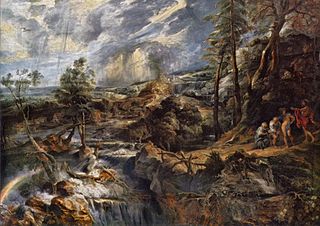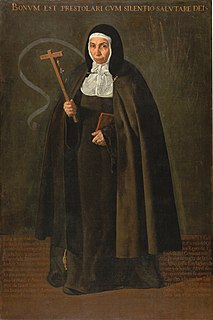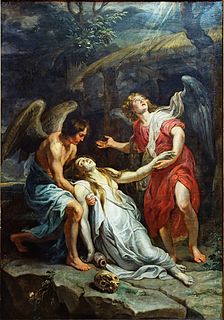 W
WThe Metropolitan Museum of Art possesses in its collection a self portrait painted by Flemish artist Anthony van Dyck. Done in oil on canvas, the work depicts its creator during his early twenties.
 W
WThe Apostle Matthew is a c.1618-1620 painting of Matthew the Apostle by the Flemish artist Anthony van Dyck. One of its inspirations was probably the series of paintings of the apostles he had seen in his master Rubens' studio around 1610, produced for the Duke of Lerma. The smooth brushwork is consistent with the painter's other works from first period in Antwerp.
 W
WThe Betrayal of Christ is a c.1618-20 painting by Anthony van Dyck. He also produced two other versions of the same subject at around the same time, now in Madrid and Minneapolis.
 W
WThe Betrayal of Christ is a c.1620 painting by the Flemish painter Anthony van Dyck. He also produced two other versions of the same subject at around the same time, now in Bristol and Minneapolis.
 W
WThe Betrayal of Christ is a 1620 painting by Anthony van Dyck, now in the Minneapolis Institute of Arts. He also produced two other versions of the same subject at around the same time, now in Bristol and Madrid.
 W
WThe Brazen Serpent is a 1618-1620 oil on canvas painting by Anthony van Dyck, now in the Museo del Prado in Madrid. Its shows a scene from the Old Testament.
 W
WCatharina Both van der Eem is a painting by the Dutch Golden Age painter Frans Hals, painted in 1620 and now in Louvre Museum. It is considered a pendant portrait to the Portrait of Paulus van Beresteyn, in the same museum.
 W
WChrist Crowned with Thorns is a 1619-20 painting by Anthony van Dyck. He produced it aged 20 during his first Antwerp period, when he was the main studio assistant and pupil of Peter Paul Rubens. It shows Rubens' influence in its relatively sombre palette, chiaroscuro and highly realistic portrayal of musculature. He seems to have completed it early during his stay in Italy, since it also shows the influence of Titian and other Venetian painters in Jesus' face.
 W
WChrist on the Cross, Christ between the two murderers or Le Coup de Lance is a 1620 painting of the Crucifixion of Jesus by Peter Paul Rubens, originally intended for the Convent of the Friars Minor. It is now in the Koninklijnk Museum voor Schone Kunsten in Antwerp.
 W
WCleopatra is a c.1620 painting by Artemisia Gentileschi, now in the Fondazione Cavallini-Sgarbi collection in Ferrara. It was formerly misattributed to Guido Cagnacci. It shows Cleopatra committing suicide with an asp.
 W
WThe Deposition or Lamentation over the Dead Christ is a 1618-20 painting by the Flemish painter Anthony van Dyck. It is now in the Kunsthistorisches Museum in Vienna, which it entered in 1720.
 W
WDrunken Silenus is a 1620 painting by Anthony van Dyck, now in the Gemäldegalerie Alte Meister in Dresden.
 W
WThe Fall of the Damned, alternately known as The Fall of the Rebel Angels is a monumental religious painting by Peter Paul Rubens. It features a jumble of the bodies of the damned, hurled into abyss by archangel Michael and accompanying angels.
 W
WFlowers in a Vase is a 17th-century painting, usually attributed to Jan Brueghel the Elder but sometimes argued to be a collaboration between him and his son Jan Brueghel the Younger. It was probably painted around 1620, before the son's trip to Italy. It is now in the Royal Museum of Fine Arts, Antwerp as catalogue number 643.
 W
WJudith Slaying Holofernes is a painting by the Italian early Baroque artist Artemisia Gentileschi, completed in 1612-13 and now at the Museo Capodimonte, Naples, Italy. It is considered one of her iconic works. The canvas shows the scene of Judith beheading Holofernes. Early feminist critics interpreted the painting as a form of visual revenge following Gentileschi's rape by Agostino Tassi in 1611; more recent analysis of the painting has taken a broader view, seeing the painting in the context of Gentileschi's achievement in portraying strong women. The subject takes an episode from the apocryphal Book of Judith in the Old Testament, which recounts the assassination of the Assyrian general Holofernes by the Israelite heroine Judith. The painting shows the moment when Judith, helped by her maidservant Abra, beheads the general after he has fallen asleep drunk.
 W
WLandscape with Philemon and Baucis is a 1620 painting by Flemish artist Peter Paul Rubens. The painting is now located in the Kunsthistorisches Museum in Vienna. It is centred on the myth of Baucis and Philemon.
 W
WLandscape with Skater is an oil on canvas painting by Flemish artist Joos de Momper. The painting is today considered a collaboration between the latter and Jan Brueghel the Elder. It was painted between 1615 and 1625. The painting is kept in the Museum of Prado in Madrid.
 W
WLife in the Countryside is an oil on canvas painting by Flemish artists Jan Brueghel the Elder and Joos de Momper. It was painted between 1620 and 1622. The painting is kept in the Museum of Prado in Madrid.
 W
WMucius Scaevola before Lars Porsenna is a c.1618-1620 painting by Rubens and his pupil Antony van Dyck. It was painted for the Spanish royal court and remained in the royal collection in Madrid until the second half of the 18th century. It was then acquired by prince Kaunitz of Vienna and then in 1820 for the Esterhazy collection. It is now in the Museum of Fine Arts (Budapest). Its subject is drawn from Livy 2:12 and its account of Mucius Scaevola's bravery before Lars Porsenna after the former's failed attempt to assassinate the latter.
 W
WMystic Marriage of Saint Catherine is a c.1616-1620 oil on canvas painting by Giulio Cesare Procaccini, now in the Pinacoteca di Brera in Milan. It is one of the artist's last works, influenced by Correggio, Titian's allegories and Leonardo da Vinci's The Virgin and Child with Saint Anne (Louvre).
 W
WThe Nun Jerónima de la Fuente is a full-length portrait painting by Diego Velázquez depicting the titular nun. Velázquez painted Jerónima, which is in oil on canvas, in 1620. It is now on display at the Museo del Prado in Madrid, Spain.
 W
WPerseus Freeing Andromeda is a painting by the Flemish artist Peter Paul Rubens, executed in 1622. It is housed in the Gemäldegalerie of Berlin, Germany.
 W
WPortrait of a Lady is an oil on canvas painting by Flemish painter Gaspar de Crayer. The painting is kept in the Academy of Fine Arts in Vienna.
 W
WPortrait of a Young Man in Armor is a c. 1620 oil painting on canvas by Peter Paul Rubens.
 W
WPortrait of Abraham Grapheus is a 1620 painting by Cornelis de Vos, now in the Royal Museum of Fine Arts, Antwerp. Its subject was a fellow member of Antwerp's Guild of St Luke, of which de Vos was then dean. The work was taken to Paris by the French occupiers of the Southern Netherlands between 1794 and 1796. It returned to Antwerp in 1815, where it hung in the Antwerp Academy.
 W
WPortrait of an Actor is a painting by Domenico Fetti in the Hermitage Museum in Saint Petersburg, Russia. It was probably painted in 1621 or 1622 in Mantua, Italy. The sitter, who is holding a theatre mask, is believed to be a commedia dell'arte actor, either Tristano Martinelli or Francesco Andreini. There is a well known copy of the portrait by an unidentified artist in the Gallerie dell'Accademia in Venice.
 W
WThe Rape of Orithyia by Boreas is a 1620 painting by Peter Paul Rubens, now in the Academy of Fine Arts Vienna. It shows the rape of Orithyia by Boreas.
 W
WRisen Christ is a painting by Guido Reni, from 1620.
 W
WSaint Ambrose barring Theodosius from Milan Cathedral is a painting of c. 1619–20 by Anthony van Dyck in the National Gallery, London.
 W
WSaint Martin and the Beggar is a c.1618 painting of Saint Martin of Tours by the Flemish painter Anthony van Dyck. The painting portrays the saint sharing his cloak with a beggar.
 W
WSaint Paul is a painting by Diego Velázquez that is in the Museu Nacional d'Art de Catalunya in Barcelona, Spain. The piece was created around 1619 during the early stage of Velázquez's artistic career before he moved to Madrid. At this stage of Velazquez's career he was deeply influenced by Caravaggio. In the image, Saint Paul is seated holding a book, commonly referenced as a large Gospel book.
 W
WSaints Dominic and Francis Saving the World from Christ's Anger is a 1620 painting by Peter Paul Rubens, now in the Museum of Fine Arts of Lyon. It is linked to his similar work The Virgin Mary and Saint Francis Saving the World from Christ's Anger (Brussels).
 W
WSamson and Delilah is a 1620 painting by Anthony van Dyck. He produced it just after his return from Italy and shortly before leaving for London It was heavily inspired by his tutor Rubens's version of the same subject and for a long time was attributed to Rubens. Van Dyck inverted the composition and showed Delilah in white chalk make-up and heavily rouged cheeks, the makeup traditionally worn by Parisian prostitutes. The painting is now held in the Dulwich Picture Gallery in London. He returned to the subject in 1630.
 W
WSt Mary Magdalene in Ecstasy or The Death of St Mary Magdalene is a c. 1619-20 painting by Peter Paul Rubens. It shows Mary Magdalene supported by two angels. It was produced for the Friars Minor in Ghent. It was seized by French occupation troops in 1794 and taken to Paris, before being allocated to the newly founded Palais des Beaux-Arts de Lille, where it is now housed.
 W
WVase of Flowers in a Window Niche is a still life oil on canvas painting of flowers by Ambrosius Bosschaert the Elder. It was painted in 1620 and is now in the Mauritshuis in The Hague.
 W
WA Village Looted at Night is an early 17th-century painting by Dutch artist Esaias van de Velde. Done in oil on panel and depicting the looting of a village, the painting is currently in the collection of the National Gallery of Denmark.
 W
WThe Wild Boar Hunt is a 1618-1620 oil on oak panel painting by Peter Paul Rubens, now in the Gemäldegalerie Alte Meister in Dresden.